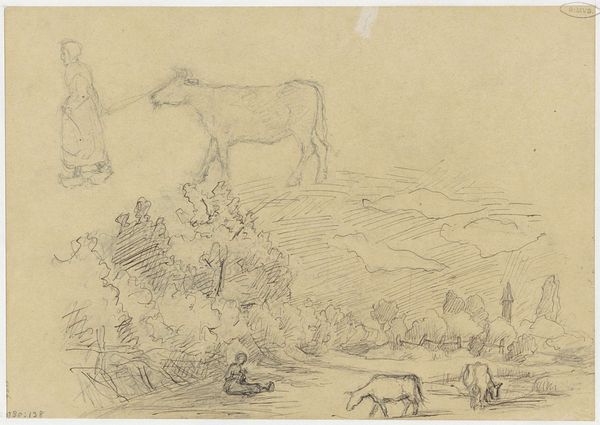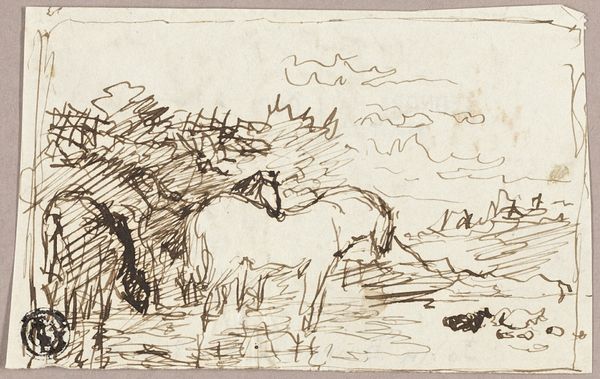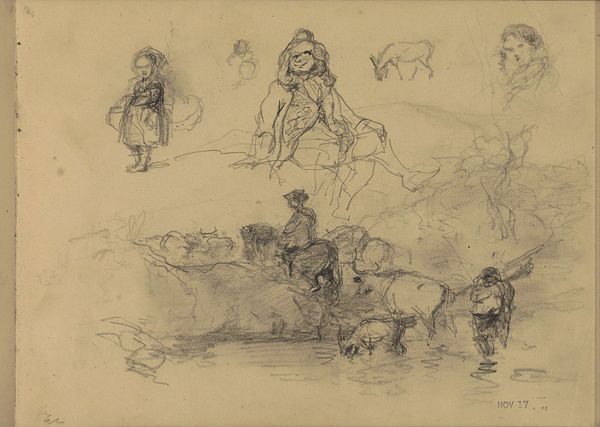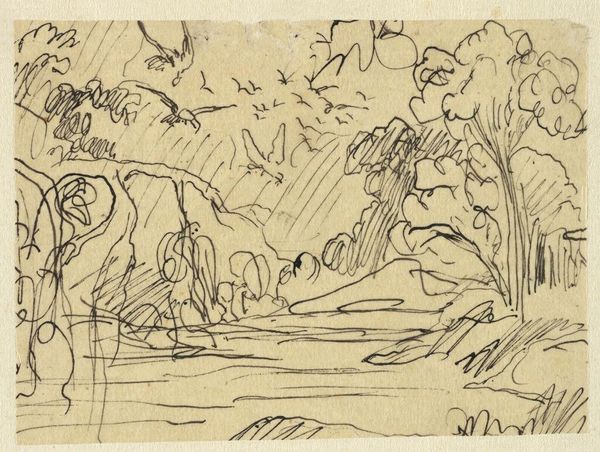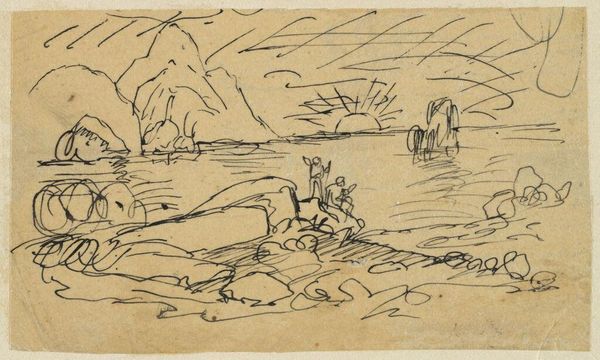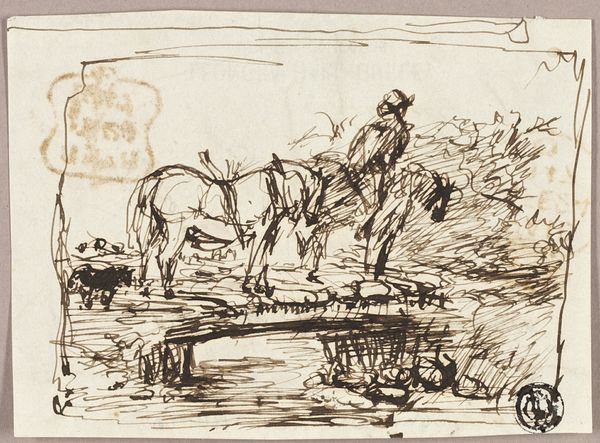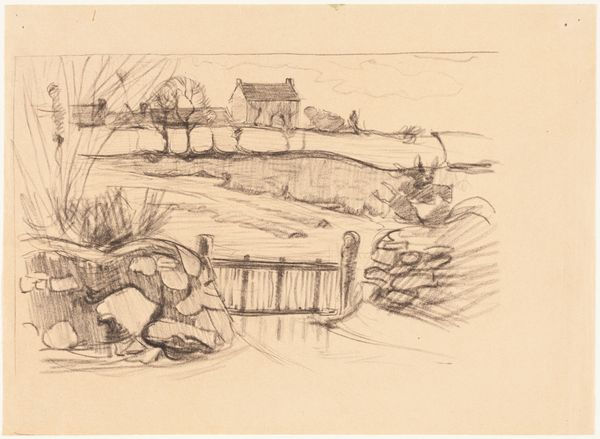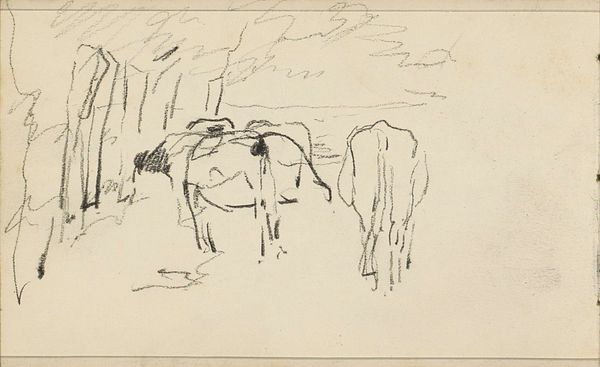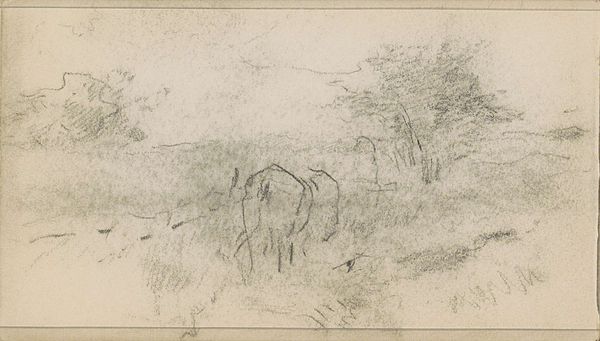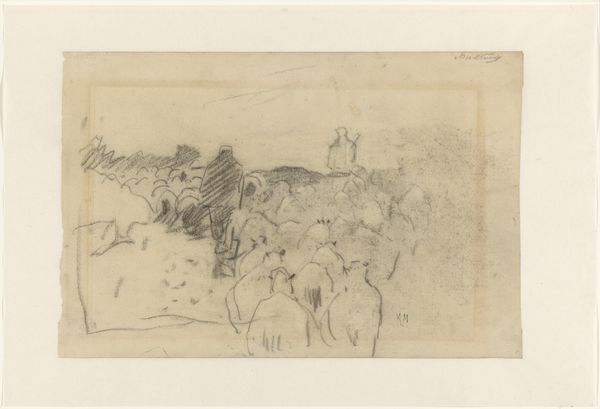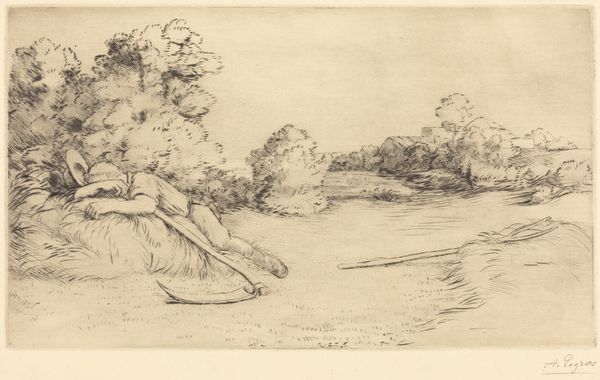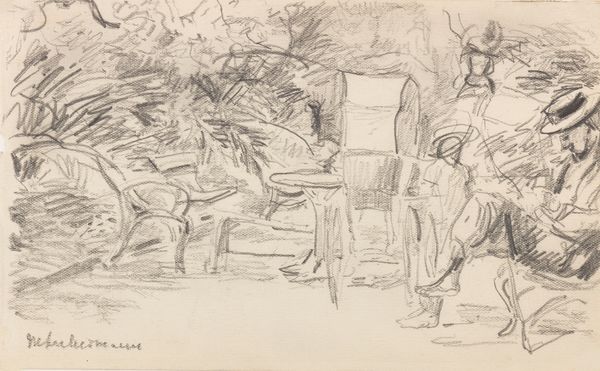
drawing, pencil
#
portrait
#
drawing
#
impressionism
#
pencil sketch
#
landscape
#
pencil
Dimensions: height 190 mm, width 290 mm
Copyright: Rijks Museum: Open Domain
Editor: Here we have Jozef Israëls' pencil drawing, "Boy on a Horse and Waterside with Three Ducks," created sometime between 1834 and 1911. It feels almost like a glimpse into a fleeting moment, a sketch capturing a quiet scene. What are your initial thoughts? Curator: It’s interesting to consider this drawing within the context of 19th-century artistic movements. Israëls, though often associated with the Hague School, was engaging with wider trends in representing everyday life. Consider how artists were increasingly interested in depicting children not as miniature adults, but as individuals experiencing the world. What social factors might have influenced this shift? Editor: I suppose a growing middle class meant more attention to childhood as a distinct stage of life, worthy of artistic representation? Curator: Precisely. The rise of industrial society and changing family structures likely contributed. Israëls here offers a pastoral scene that arguably romanticizes rural life, contrasting it to the urban realities many were experiencing. Notice how the rough strokes add an immediacy, a sense of capturing a natural moment away from the city's chaos. Do you think that's deliberate? Editor: Definitely. The unfinished quality makes it feel more authentic, less staged. Curator: And what about the composition with two scenes? How might these two relate to one another? It is almost like he wanted to contrast this intimate human-animal experience with an un-populated wilderness. Editor: It's almost like two sides of a coin, perhaps capturing different facets of Dutch rural life. Seeing them together lets us consider how those aspects influenced society. I see the ducks as almost a counterpoint. Thanks, that really opened up some things I missed at first glance. Curator: Absolutely, looking at how these scenes function in the cultural landscape helps reveal hidden dialogues and challenges to existing norms within them.
Comments
No comments
Be the first to comment and join the conversation on the ultimate creative platform.
